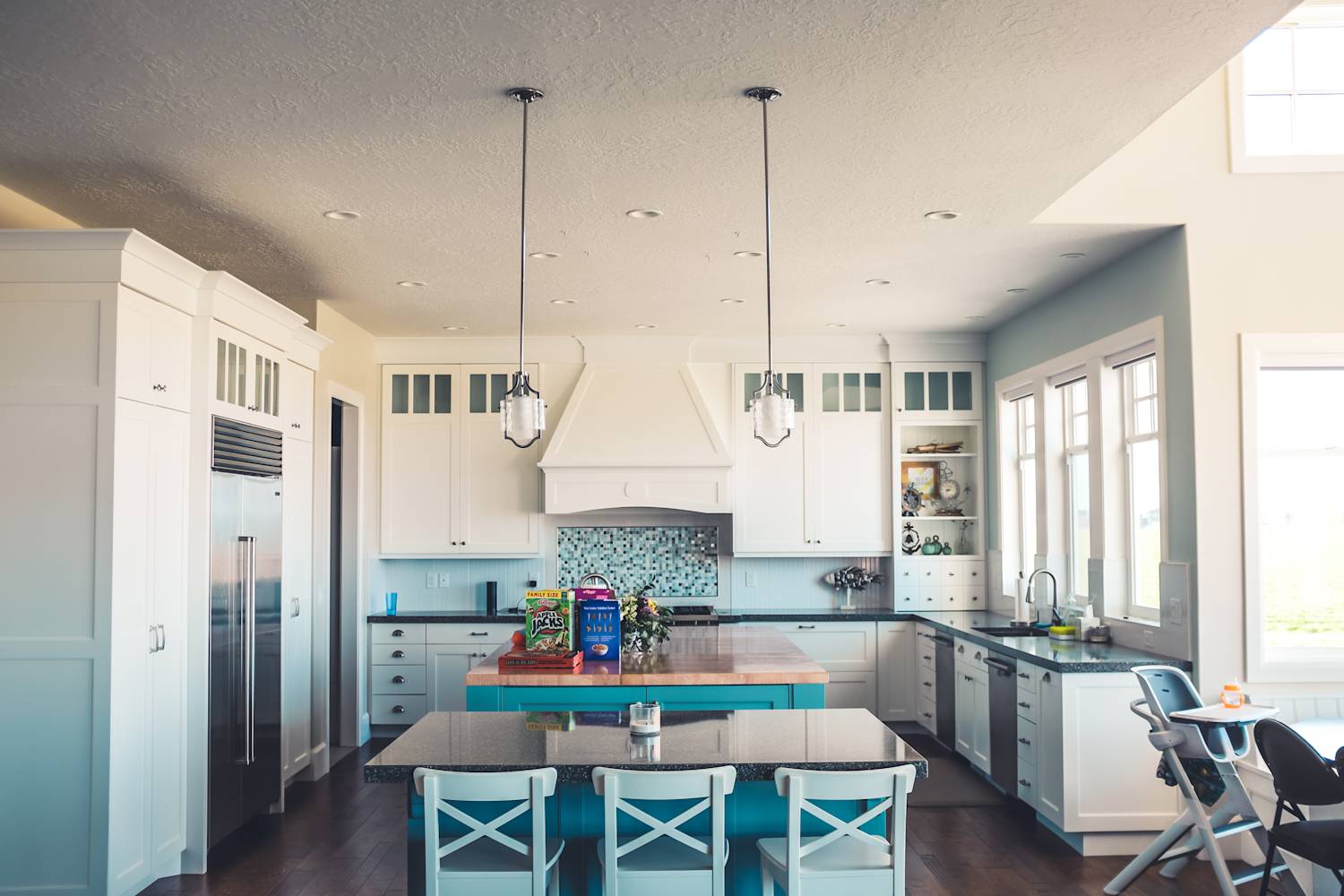
The Ultimate Guide to Saving Money on Your Home Renovation
Written: Editor | April 19, 2023

Planning for Cost-effective Renovations
Assessing your needs and prioritizing renovations
When it comes to saving money on home renovations, the first step is to assess your needs and prioritize the renovations that are most important to you. Make a comprehensive list of everything you want to change or upgrade in your home. Don't forget to consider factors like functionality, aesthetics, and long-term value.
Once you have your list, prioritize the renovations based on your budget and the impact they will have on your daily life. Focus on essential improvements, such as fixing any structural issues, improving energy efficiency, and enhancing the functionality of key spaces like the kitchen and bathroom. By prioritizing the renovations, you can allocate your funds more efficiently.
Researching and comparing prices for materials and labor
To save money on home renovations, it's crucial to research and compare prices for materials and labor. Take the time to shop around and get quotes from different suppliers and contractors. Look for both quality and affordability, as you don't want to compromise on the durability and longevity of the materials used.
Additionally, consider alternative options and explore DIY possibilities for simpler projects. Sometimes, taking a hands-on approach can significantly reduce costs. However, always ensure that you have the necessary skills and equipment to tackle the job effectively and safely.
Setting a realistic budget for your home renovation project
One of the most essential steps in saving money on home renovations is setting a realistic budget. Take into account all the expenses, including materials, labor, permits, and any unexpected costs that may arise. Be sure to leave some wiggle room in your budget to accommodate unforeseen expenses.
To stick to your budget, it's important to keep track of your spending throughout the entire renovation process. Consider using budgeting apps or spreadsheets to monitor your expenses and make adjustments as necessary. By having a clear understanding of your budget, you can make informed decisions and avoid overspending.
Remember, cost-effective renovations don't necessarily mean cutting corners or sacrificing quality. By assessing your needs, researching prices, and setting a realistic budget, you can save money while still achieving the improvements you desire. With careful planning and smart decision-making, you can transform your home without breaking the bank.

Cost-Saving Ideas for Home Renovations
Using recycled or repurposed materials
If you're looking to save money on your home renovation project, consider using recycled or repurposed materials. Not only is this environmentally friendly, but it can also add a unique character to your home. You can find recycled materials at salvage yards, online marketplaces, and even in your own home. For example, you could repurpose old doors as tabletops or use reclaimed wood for flooring or accent walls. Not only will this save you money, but it will also give your home a one-of-a-kind look.
DIY vs. hiring professionals: Pros and cons
Another way to save money on home renovations is by deciding whether to tackle the project yourself or hire professionals. DIY can save you money on labor costs, but it's important to assess your skills and the complexity of the project. Some tasks, such as electrical or plumbing work, are best left to the experts to ensure safety and avoid costly mistakes. However, simpler projects like painting or installing new light fixtures can be done by homeowners with the right tools and resources. Consider your budget, timeline, and capabilities before deciding which route to take.
Opting for energy-efficient appliances and fixtures to save on utility bills
When renovating your home, consider investing in energy-efficient appliances and fixtures. While they may have a higher upfront cost, they can significantly save you money on your utility bills in the long run. Look for appliances with the Energy Star label, which indicates that they meet strict energy efficiency guidelines. Additionally, consider installing low-flow faucets and showerheads, as well as LED light bulbs. These small changes can make a big difference in reducing your energy consumption and lowering your monthly expenses.
Remember, saving money on your home renovation doesn't mean compromising on quality or style. With careful planning and consideration, you can achieve your desired results while staying within your budget. Whether it's using recycled materials, deciding on DIY or professional help, or opting for energy-efficient fixtures, these cost-saving ideas can help you transform your home without breaking the bank.

Creative Ways to Cut Renovation Costs
Negotiating prices with contractors and suppliers
When it comes to home renovation, one of the easiest ways to save money is by negotiating prices with contractors and suppliers. Don't be afraid to ask for a lower price or for discounts on materials. Many contractors are willing to negotiate, especially if they know you're on a tight budget. Be prepared to do some research and get multiple quotes so you can compare prices and negotiate effectively. Remember that every dollar saved adds up, so don't be shy about asking for a better deal.
Utilizing discounts and sales
Keep an eye out for discounts and sales when planning your home renovation. Many stores offer seasonal sales or have clearance items that can help you save money on materials, appliances, and furniture. Additionally, consider using discount websites or apps that offer coupons and deals for home improvement items. By staying informed and taking advantage of these opportunities, you can significantly cut down on your renovation costs.
Renting tools and equipment instead of purchasing
Instead of buying expensive tools and equipment that you may only use once or twice during your renovation, consider renting them instead. Renting tools and equipment is a cost-effective alternative that allows you to get the job done without breaking the bank. Many home improvement stores and rental companies offer a wide range of tools and equipment for rent at affordable prices. This way, you can save money and still have access to the tools you need to complete your renovation projects.
By following these creative ways to cut renovation costs, you can save money while still achieving your desired results. Remember to negotiate prices, take advantage of discounts and sales, and consider renting tools and equipment instead of purchasing. With a little planning and resourcefulness, you can make your home renovation project more affordable without compromising on quality.

Conclusion
Benefits and satisfaction of completing a cost-effective home renovation
When it comes to home renovations, saving money is always a top priority. Not only does it help you stay within your budget, but it also allows you to achieve the desired changes without breaking the bank. By following the tips and strategies mentioned in this article, you can enjoy the following benefits and satisfaction:
-
Financial Savings: By opting for cost-effective alternatives, you can significantly reduce your overall expenses. This means more money in your pocket for other important things.
-
Increased Home Value: A well-planned and executed renovation has the potential to increase the value of your home. This can be especially beneficial if you plan to sell your house in the future.
-
Aesthetic Transformation: Updating your home doesn't have to cost a fortune. With smart choices and creative ideas, you can achieve a stunning aesthetic transformation that will make you proud of your space.
Final thoughts on saving money during home improvement projects
Saving money during a home renovation doesn't mean compromising on quality or style. Instead, it's about being resourceful, smart, and understanding your priorities. Keep the following in mind:
-
Plan and Budget: Proper planning and budgeting are crucial to a successful cost-effective renovation. Determine your priorities, set a realistic budget, and stick to it.
-
Research and Compare: Before making any purchasing decisions, do thorough research and compare prices and options. Look for sales, discounts, and affordable alternatives without compromising on quality.
-
DIY or Hire Professionals: Assess your skills and consider what tasks you can handle yourself and when it's best to hire professionals. DIY projects can save you money, but remember that some tasks require expertise.
Resources and additional tips for budget-friendly home renovations
Here are some additional resources and tips to help you save money during your home renovation:
-
Reuse and Recycle: Look for opportunities to reuse or repurpose items you already have instead of buying new ones.
-
Shop Secondhand: Thrift stores, online marketplaces, and salvage yards can be great sources for budget-friendly materials and furniture.
-
Focus on High-Impact Areas: Rather than renovating the entire house, prioritize areas that will have the biggest impact on the overall look and feel.
-
Consider Energy Efficiency: Invest in energy-efficient appliances, fixtures, and insulation. While they may require an upfront investment, they can save you money on utility bills in the long run.
-
Consult with Professionals: Seek advice from architects, contractors, or interior designers who specialize in cost-effective renovations. They can provide valuable insights and recommendations.
Remember, with careful planning, research, and a dash of creativity, you can achieve your dream home renovation while saving money. Happy renovating!



